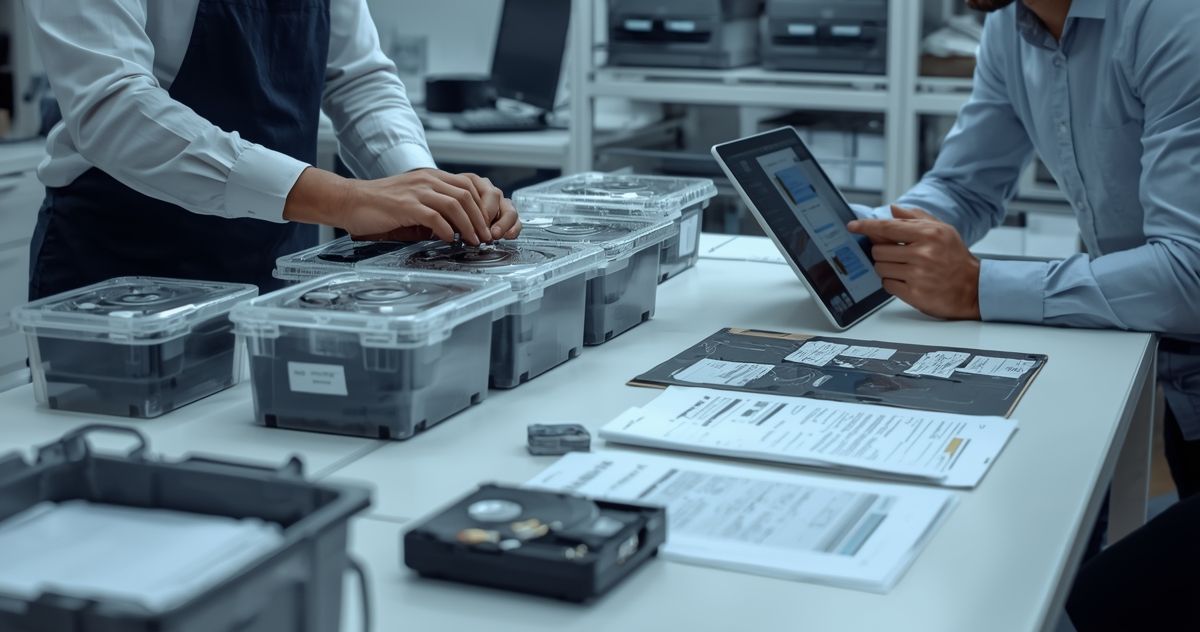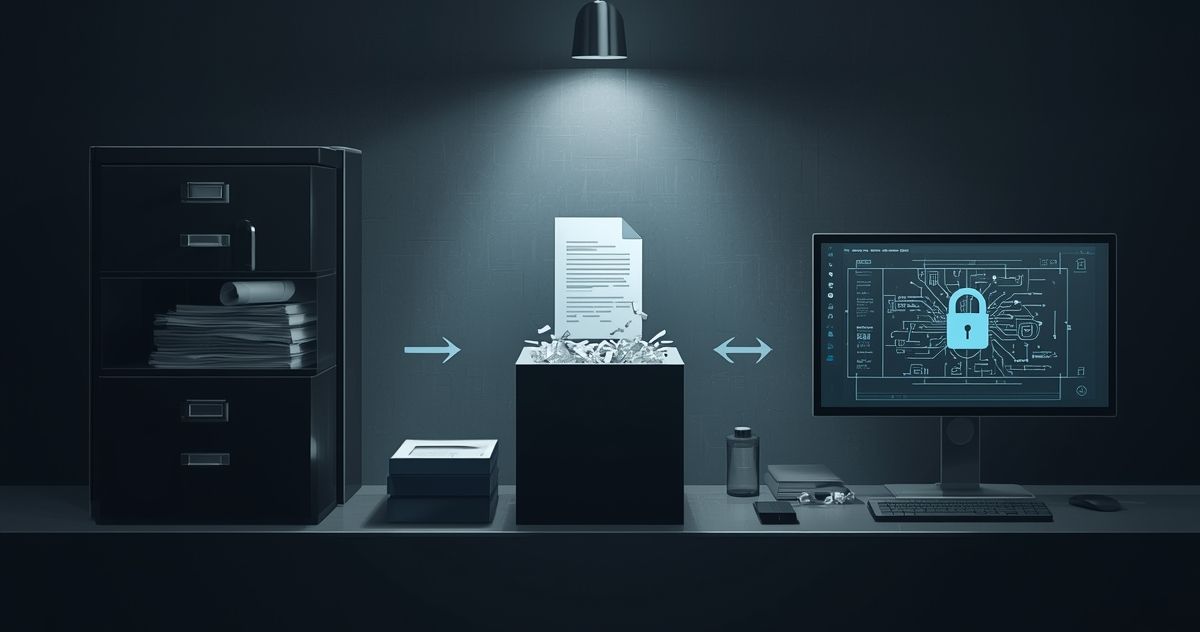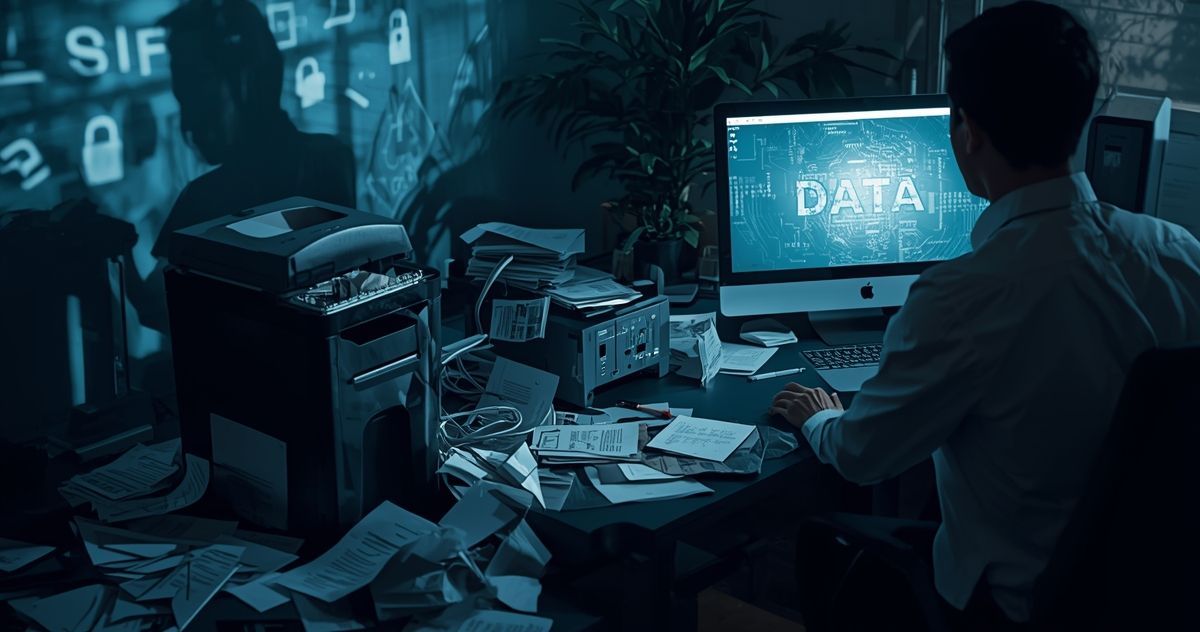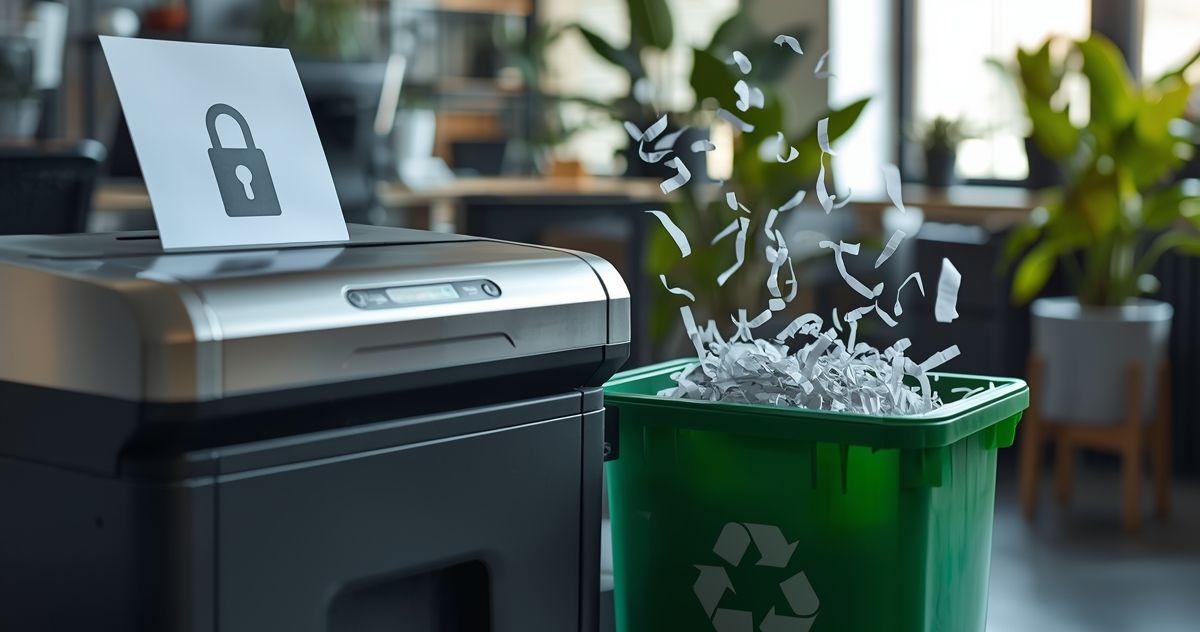The Role of Physical Data Destruction in Combating AI-Based Data Recovery Threats
The Role of Physical Data Destruction in Combating AI-Based Data Recovery Threats
Advances in artificial intelligence (AI) have undoubtedly revolutionized businesses. From predictive analytics to customer service automation, AI has opened doors for unprecedented growth.
But there’s a flip side to this coin. Just as AI-powered tools have improved efficiency, they have also made it easier for cybercriminals to recover sensitive data—even from seemingly clean devices.
This threat has elevated the importance of physical data destruction as a crucial component in securing sensitive information, especially for businesses handling large volumes of private or confidential data.
This post explores how AI-based data recovery works, why traditional methods of data removal or encryption may not be sufficient, and how physical destruction acts as a foolproof defense.
By the end, you'll understand why investing in secure HDD destruction services, like those offered by expert providers such as DataShredder Corporation, can protect your business and reputation.
AI-Based Data Recovery: A Growing Threat
Artificial intelligence has transformed data recovery into a more powerful science. Here’s how it works and why it matters for businesses.
How AI Recovers Deleted Data
When you delete files from your devices, the data doesn’t truly disappear. Instead, the storage space it occupies is marked as reusable until it’s overwritten by new information. Here’s where AI comes into play:
- Data Reconstruction: AI algorithms can rebuild fragmented pieces of data to recover entire files.
- Pattern Recognition: AI tools analyze patterns on storage media to identify and extract hidden or residual data.
- Deep Search: AI-powered solutions can dig deeper than traditional recovery methods, often bypassing software-based deletion mechanisms or encryption flaws.
Why This Is a Risk for Businesses
For enterprises storing sensitive information (employee details, customer data, financial records, etc.), this capability raises red flags. Devices discarded without comprehensive data destruction can reveal:
- Intellectual property, such as proprietary formulas or strategies.
- Confidential client data creates legal and ethical liabilities.
- Trade secrets and contracts, potentially giving competitors an unfair advantage.
A 2023 report by Cybersecurity Ventures estimates that the global cost of data breaches could reach $10.5 trillion annually by 2025. Clearly, tighter measures are needed to mitigate this risk.
The Case for Physical Data Destruction
You may think your data is safe after performing a factory reset or using specialized data removal software. But here’s the reality they don’t tell you: with AI recovery entering the picture, digital data erasure is no longer enough in high-stakes environments. Here's why physical destruction is the ultimate safeguard.
Unrecoverable by Design
The key benefit of physical data destruction is its irreversibility. When a hard drive is shredded into tiny fragments or incinerated, there’s zero chance of reconstruction—even for sophisticated AI tools.
Trustworthy for Compliance
Businesses across industries face strict guidelines for data handling and disposal. For example:
- Healthcare entities must comply with HIPAA, ensuring patient data is disposed of securely.
- Financial firms are guarded by mandates like GLBA requiring data destruction for customer protection.
- General businesses must adhere to GDPR or CCPA for user privacy.
Certified physical destruction ensures compliance with these regulations, helping mitigate legal risks and reputational damage.
Eco-Friendly and Ethical Disposal
Many services, such as those offered by DataShredder Corporation, also incorporate responsible recycling practices for electronic components, ensuring environmental sustainability. The metal and plastic fragments from destroyed devices are often repurposed, minimizing waste.
Applications of Physical Data Destruction Across Industries
Whether you’re running a tech startup, a healthcare facility, or a legal firm, physical destruction can secure data in various formats.
Hard Drive and Media Destruction
When disposing of old computers, servers, or backup tapes, shredding guarantees no lingering data escapes into the wrong hands.
Mobile Devices and USB Drives
Even compact devices like smartphones, tablets, and USB drives pose risks. Services specializing in media destruction utilize advanced shredders capable of pulverizing these smaller technologies.
Paper and Document Shredding
For industries still reliant on physical records, shredding sensitive documents remains integral to overall data security strategies.
Why DataShredder Corporation is a Leader in Secure Data Destruction
DataShredder Corporation has been a trusted name in secure data disposal since 2005, offering tailored solutions for businesses of all sizes. Some features that set them apart include:
- NAID Certification: Ensures services meet the highest standards for data destruction.
- Eco-Friendly Practices: Recycling is built into every component of their operations.
- Fast Turnaround Times: Minimal disruptions to your workflow.
Their specialized offerings include:
- Hard Drive Destruction for irreparable elimination of digital data.
- Media Destruction, where small devices like thumb drives and memory cards are destroyed safely.
- IT Equipment Recycling, ensuring end-of-life components are processed responsibly.
For businesses seeking peace of mind, you can learn more about their services by visitingDataShredder Corporation.
Steps to Implement Secure Physical Data Destruction
If you’re ready to take the next step in securing your business data, here’s how you can ensure effective implementation.
Step 1: Assess Your Data Inventory
Identify all devices and storage systems holding sensitive information.
Step 2: Choose a Certified Provider
Partner with certified professionals like DataShredder Corporation to handle the destruction process.
Step 3: Schedule Regular Disposals
Create a schedule for routine destruction to handle outdated devices and media.
Step 4: Request Certificates of Destruction
Ensure your provider gives a certificate of destruction, verifying compliance for regulatory audits.
Building a Safer Future with Physical Data Destruction
With cyber threats escalating and AI unlocking unparalleled recovery capabilities, the importance of foolproof data destruction cannot be overstated. Relying solely on software-based erasure methods could leave your business vulnerable to devastating breaches.
By integrating physical destruction into your data security strategy, you gain a trusted shield that not only protects your assets but also reinforces customer confidence and regulatory compliance.
Don’t leave data protection to chance. If you’re serious about safeguarding sensitive information, get in touch with DataShredder Corporation and take control of your data security today.











Share On: